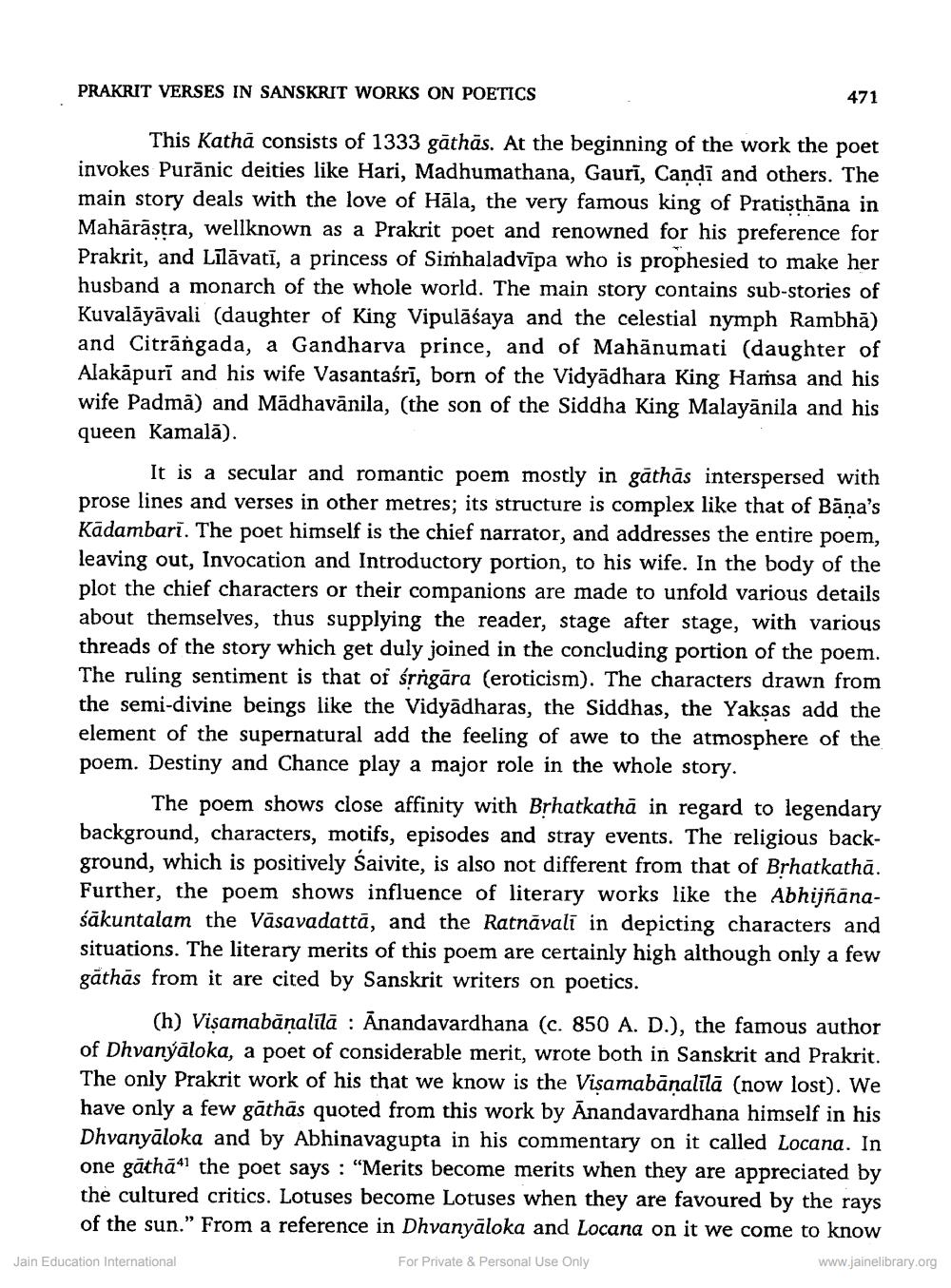________________ PRAKRIT VERSES IN SANSKRIT WORKS ON POETICS 471 This Katha consists of 1333 gathas. At the beginning of the work the poet invokes Puranic deities like Hari, Madhumathana, Gauri, Candi and others. The main story deals with the love of Hala, the very famous king of Pratisthana in Maharastra, wellknown as a Prakrit poet and renowned for his preference for Prakrit, and Lilavati, a princess of Simhaladvipa who is prophesied to make her husband a monarch of the whole world. The main story contains sub-stories of Kuvalayavali (daughter of King Vipulasaya and the celestial nymph Rambha) and Citrangada, a Gandharva prince, and of Mahanumati (daughter of Alakapuri and his wife Vasantasri, born of the Vidyadhara King Hamsa and his wife Padma) and Madhavanila, (the son of the Siddha King Malayanila and his queen Kamala). It is a secular and romantic poem mostly in gathas interspersed with prose lines and verses in other metres; its structure is complex like that of Bana's Kadambari. The poet himself is the chief narrator, and addresses the entire poem, leaving out, Invocation and Introductory portion, to his wife. In the body of the plot the chief characters or their companions are made to unfold various details about themselves, thus supplying the reader, stage after stage, with various threads of the story which get duly joined in the concluding portion of the poem. The ruling sentiment is that of srngara (eroticism). The characters drawn from the semi-divine beings like the Vidyadharas, the Siddhas, the Yaksas add the element of the supernatural add the feeling of awe to the atmosphere of the poem. Destiny and Chance play a major role in the whole story. The poem shows close affinity with Brhatkatha in regard to legendary background, characters, motifs, episodes and stray events. The religious background, which is positively Saivite, is also not different from that of Brhatkatha. Further, the poem shows influence of literary works like the Abhijnanasakuntalam the Vasavadatta, and the Ratnavali in depicting characters and situations. The literary merits of this poem are certainly high although only a few gathas from it are cited by Sanskrit writers on poetics. (h) Visamabanalita : Anandavardhana (c. 850 A. D.), the famous author of Dhvanyaloka, a poet of considerable merit, wrote both in Sanskrit and Prakrit. The only Prakrit work of his that we know is the Visamabanalila (now lost). We have only a few gathas quoted from this work by Anandavardhana himself in his Dhvanyaloka and by Abhinavagupta in his commentary on it called Locana. In one gatha41 the poet says : "Merits become merits when they are appreciated by the cultured critics. Lotuses become Lotuses when they are favoured by the rays of the sun." From a reference in Dhvanyaloka and Locana on it we come to know For Private & Personal Use Only www.jainelibrary.org Jain Education International




